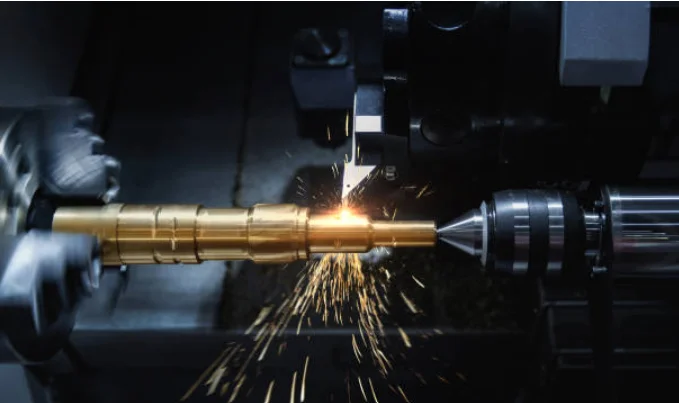Driven by customization, precision, and speed in the B2B sector, businesses have started adopting precision machining CNC technologies. Among these, milling CNC is uniquely positioned due to its custom mechanical engineering applications. It is widely used in automotive prototyping, aerospace brackets, and industrial enclosures, and is changing the way companies think about design-to-production workflows.
In this article, we discuss advanced techniques that are applied in CNC milling and their importance for custom mechanical engineering, as well as how they allow for complex demands while maintaining rigorous quality and cost-effective standards.
The Basics of Custom Mechanical Engineering and Milling CNC
CNC milling is considered a subtractive machining process. It employs computer-operated rotary cutting tools to remove necessary material from the workpiece. Unlike manual milling where the operator moves the cutter, CNC systems are programmed to follow paths guaranteeing precision for every cut.
For custom mechanical engineering where the intricacies of parts demand stringent tolerances, CNC precision machining together with milling operations ensures that the final components produced are functionally satisfactory, if not better. This process is compatible with aluminum, steel, titanium, and even some engineering plastics making it applicable in robotics and automation, the automotive industry, as well as energy systems.
One notable aspect of milling CNC that makes it stand out in this industry is its capability to produce intricate shapes with high repeatability and consistency. Detailed contours and pockets, threaded holes, and beveled edges can all be tailored to a specific part’s requirements and functions.
How Multi-Axis Milling Improves the Efficiency of Custom Engineering
In the past, intricate parts that were complicated in nature had to be worked on in separate stages with multiple tool changes, adding extra time and cost to the process. This is now a thing of the past thanks to the introduction of 4-axis and 5-axis milling CNC machines. These machines use simultaneous movements from the tool or workpiece along multiple axes, allowing for more complex geometries to be created in a single process flow.
This also reduces the need for human resources and streamlines processes, increasing efficiency and consistency. For B2B companies specialized in custom component production in low-to-medium batches, this level of agility translates into a powerful competitive edge. It does not require several workstations or fixtures, which means that prototyping and production can be consolidated into a single workflow.
Incorporating multi-axis milling CNC into a more comprehensive precision machining CNC framework enables manufacturers to bolster project turnaround times, error mitigation, and machine utilization across differently complex projects.
Digital Integration: From CAD to Cut in a Seamless Workflow
Seamless integration with design platforms is one of the most notable features of modern milling CNC technology. Engineers can create parts in CAD software, simulate their performance, and convert them into a CAM (Computer Aided Manufacturing) program that controls the CNC machine.
This CAD to CNC model streamlines design iteration processes and significantly improves the speed of adjustments. Parts that are not validated in simulation tests can be adjusted in a matter of hours—an absolute necessity in custom mechanical projects, where response times need to be quick.
Integrating this into a precision machining CNC shop makes it possible to manufacture critical components with minimal downtime. It also ensures that tolerances, materials, and finishes are all verified before any cutting is done, minimizing waste and errors in cutting processes.
Industry Applications and Material Flexibility
The effectiveness of milling CNC machines also derives from their capability to process widespread materials encountered in custom mechanical part fabrication:
- Aluminum: Light, corrosion-resistant, and easy to machine. Used in fabrication as parts like housings, panels, and heat sinks.
- Stainless Steel: Strong and resistant to corrosion. Commonly used in structural supports and machine enclosures.
- Titanium: High strength-to-weight ratio. Found in high-stress components such as engine brackets or load-bearing arms.
- Engineering Plastics: Insulating parts, bearing surfaces or lightweight covers.
Each of these materials require different feeds, speeds, and tooling strategies, which a robust precision machining CNC system with modern software and tool libraries can provide. The ability of CNC milling machines to work with these various materials means less specialized systems are needed, increasing operational efficiency.
Minimizing Waste and Optimizing Throughput
One of the most important benefits of modern milling CNC operations is the reduction of waste. Scrapped materials are a result of traditional machining techniques, manual errors, tool misalignment, and even design misinterpretation. The risks posed by all these factors are eliminated with CNC systems as they follow programmed paths with micron level precision.
In addition, automated toolpath optimization software can be used to reduce cycle times while maximizing the life of the tool. Machine sensors have predictive diagnostics on everything from vibrations to temperature, which helps in the predictive maintenance of the machines and reduces the likelihood of catastrophic tool failure.
With regard to precision machining CNC, their profitability and delivery reliability are directly impacted by the aforementioned efficiencies. For a B2B client, the return on investment is measured through consistent quality, managed lead time, and lower overhead from diminished rework and material loss.
Surface Finish, Tolerances and the Importance of Accuracy
In industries such as aerospace, robotics, and medical technology, even the finest machining error can result in catastrophic failure or safety complications. This makes it imperative for precision machining CNC to not only deliver the required dimensions but additionally provide accurate geometric features and smooth finishes.
With advanced milling CNC, depending on the material and tooling used, surface finishes as fine as Ra 0.4μm can be achieved. Surface finish tolerances of ±0.005 mm are quite common and can be improved with careful calibration and control of the working environment.
Mechanical surface finishing impacts coating adhesion, thermal performance, friction, wear, and more. In custom engineering, where multiple parts integrate into a compact assembly, a uniform and smooth finish enhances the mechanical strength of the system and increases the life of the system.
The Future of CNC Milling in Custom Engineering
The outlook for milling CNC as a custom mechanical engineering tool looks encouraging with the advancements of Industry 4.0.
- Hybrid Machines: These are CNC milling machines that incorporate either additive manufacturing, grinding, or laser sintering.
- AI-Assisted Programming: Suggests optimal toolpaths, feeds, and cutting strategies using artificial intelligence.
- Cloud-Connected Machines: Provide the ability for real-time monitoring, diagnostic testing, and automated analysis of gathered data.
- Energy Efficiency: Reduction of power consumption while maintaining high production rates.
All in all, these advancements are being incorporated into precision machining CNC environments to meet the rising demands for smart customization, speed, and sustainability.
Conclusion
Adopting milling CNC in custom mechanical engineering for B2B businesses is not merely a process change; it’s a technological advancement. The benefits of CNC milling are maximized when integrated with a full precision machining CNC workflow, offering unrivaled flexibility, efficiency, and consistent quality.
CNC milling assists businesses in enhancing innovation by enabling rapid prototyping and quicker production of parts while simultaneously cutting down on materials and labor costs. Additionally, it helps exceed the performance benchmarks of even the most difficult clients.









